A Jaunt to Japser
✍️ • 🕑 • Series: Towards the Beautiful Islands • Tags: rocky mountains • national parks • Jasper National Park • canadian rockies • lakes • eagles • squirrels • squirrels • Places: Jasper, AB • Maligne Lake • Maligne Canyon Lookout • Valley of the Five Lakes
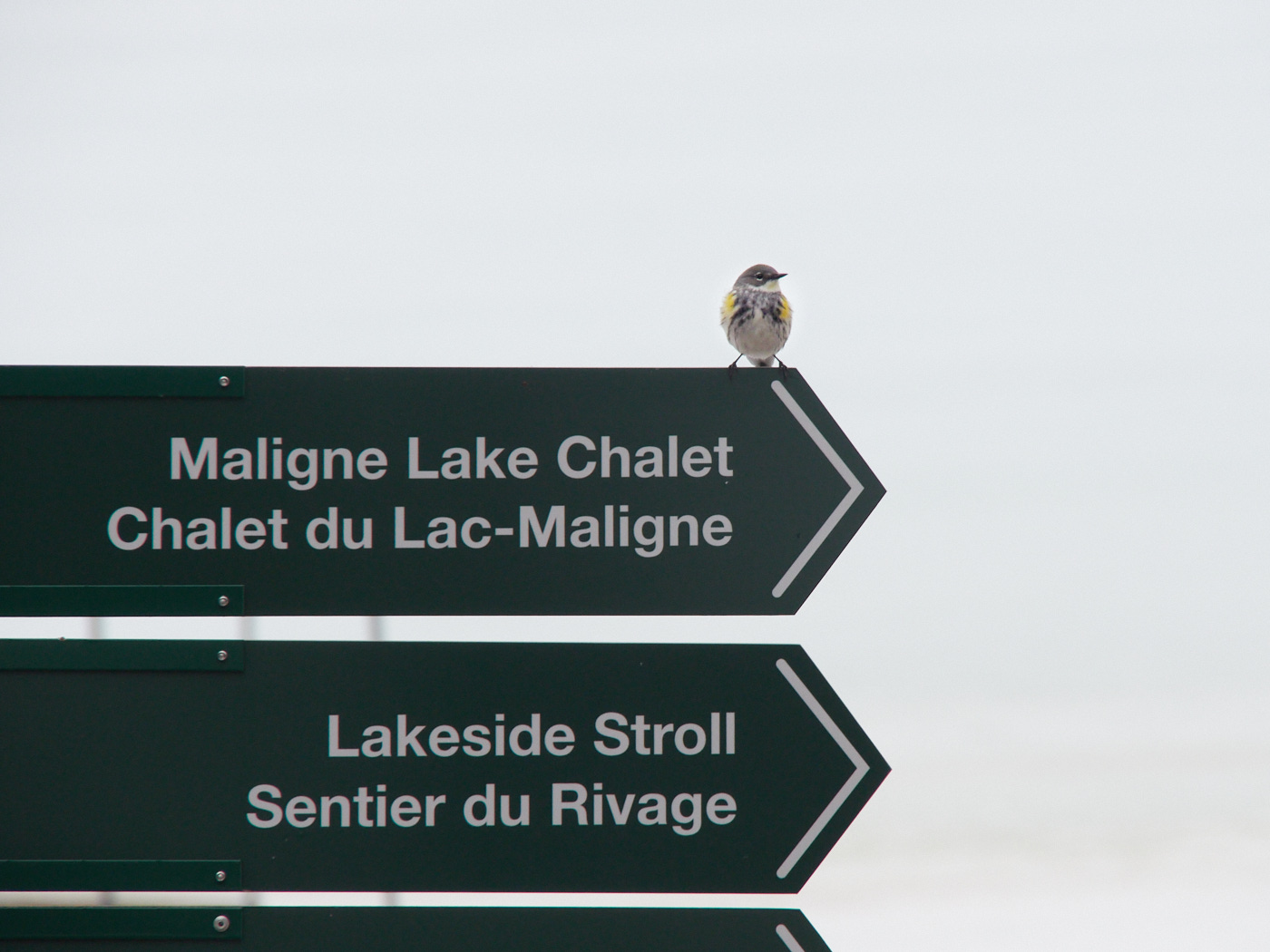
My goals for the day were simple: visit Jasper National Park, and hike some trails. I visited the Canadian Rockies with my dad in 2018, after a memorable concert, and I figured it would be nice to try to visit spots that I didn’t remember visiting back then. 😉
Table of Contents
Waking Up in B.C.
I started the day slowly and experimented with steeping coffee in my backpacking stove. Somehow the water had an odd flavor, like I had used it to cook pasta. Not sure why; I scrubbed the pot extra before I left Seattle.
As I drove the 10km from Mt. Robson Provincial Park to Jasper, I crossed a few borders.
Park boundaries, for one. I paid $10.50 for a receipt that I taped in my windshield and traded atrociously bad puns with the park attendant. I guess that counts as flirting. But hey, she did give me a fantastic park brochure…
Jasper National Park
Crossing into Jasper also meant crossing into Alberta, which also meant an adjustment of my clock to mountain time. Seeing as I was cooking my own meals and had no need to track time other than “sun up” and “sun down,” this was perhaps the most meaningless border of the three.
Jasper + Alberta at least meant I would have cell service, something I lacked in Mt. Robson. And it meant I was liable to run into larger crowds than I did at my previous stops. That’s ok!
The Rockies attract crowds for a reason. They’re flipping beautiful. And I was thrilled to have only a minor detour to hit such jaw-dropping beauty.
Lake Maligne Area
In terms of trails, I had two in mind: the Mary Schaffer Loop, over by Lake Maligne, and the ever popular Valley of the Five Lakes. Anything else was too distant, or still closed.
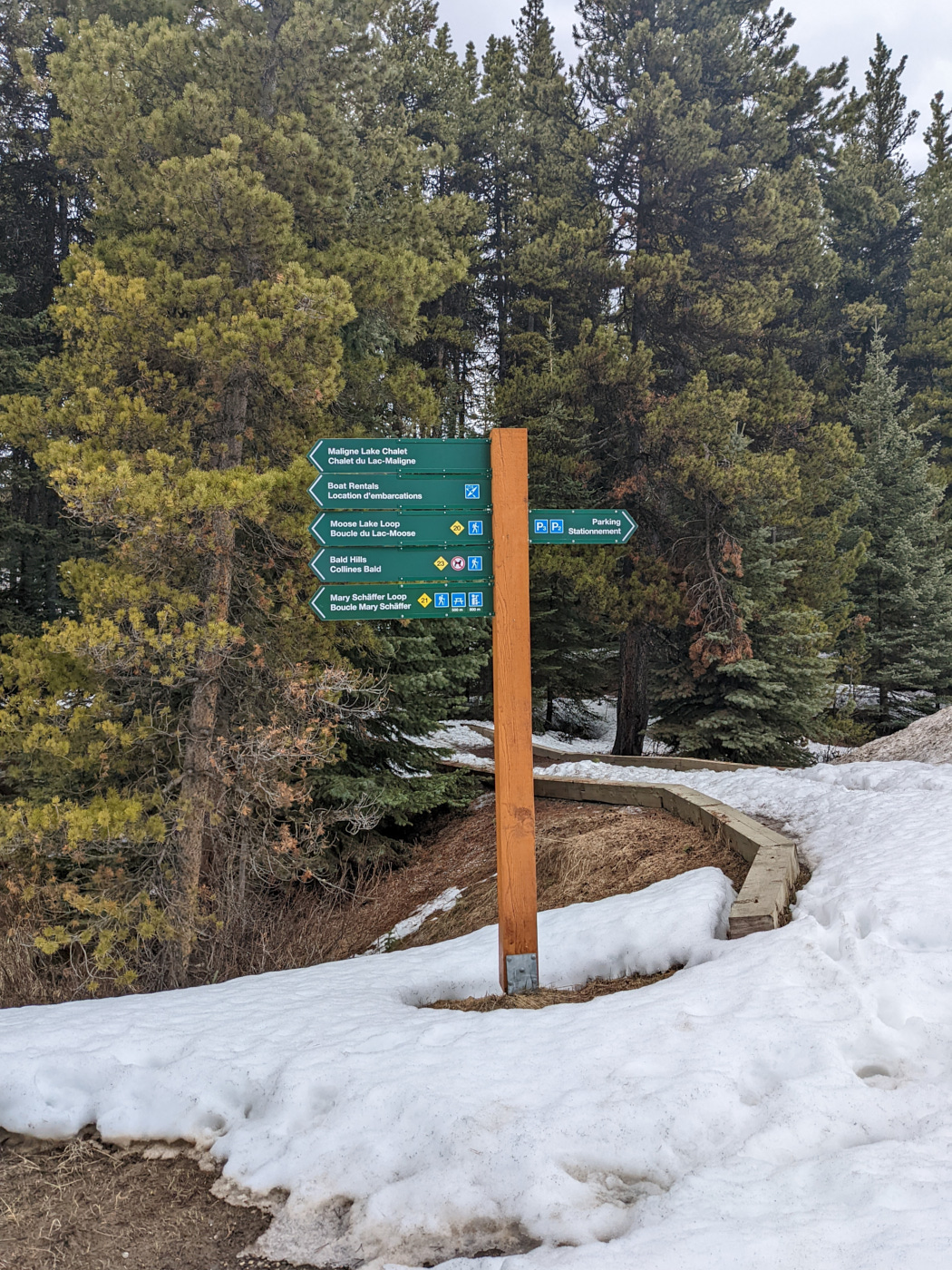
I started with the Schaffer Loop, which I remember reading was mostly popular with people taking a boat tour.
| Trail Information | ||
|---|---|---|
| Name | Mary Schaffer Loop | |
| Miles | 2 | |
| Type | loop | |
| Location | Jasper National Park | |
| State | AB | |
| Country | Canada | |
| Check out the trails index for information on more trails! | ||
Let me tell you, there was no crowd of boat-bound tourists. Here’s why:
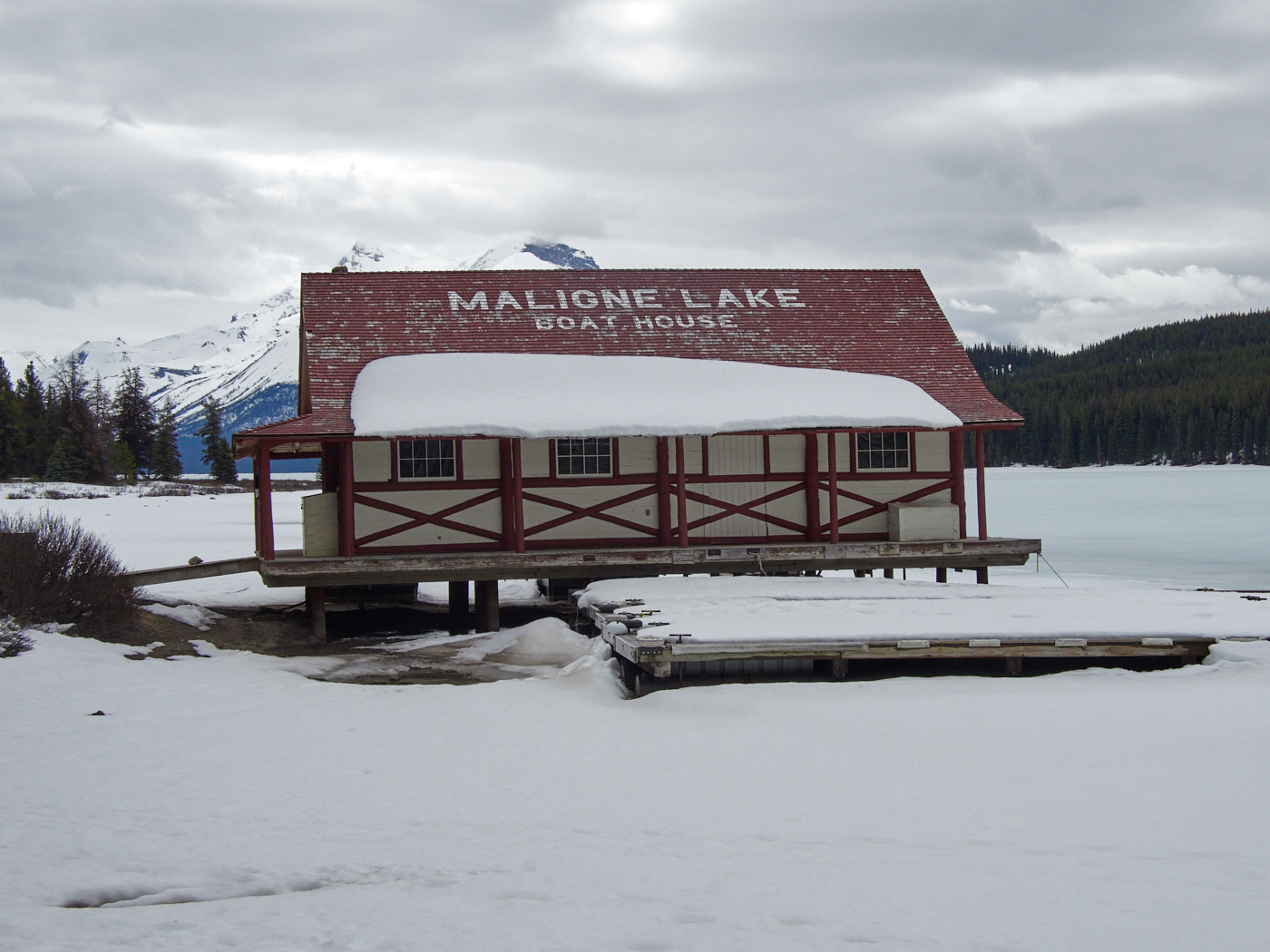
Most of the trail along the lake shore was full of beautiful views and few other people. The area was mostly, but not entirely clear of snow.
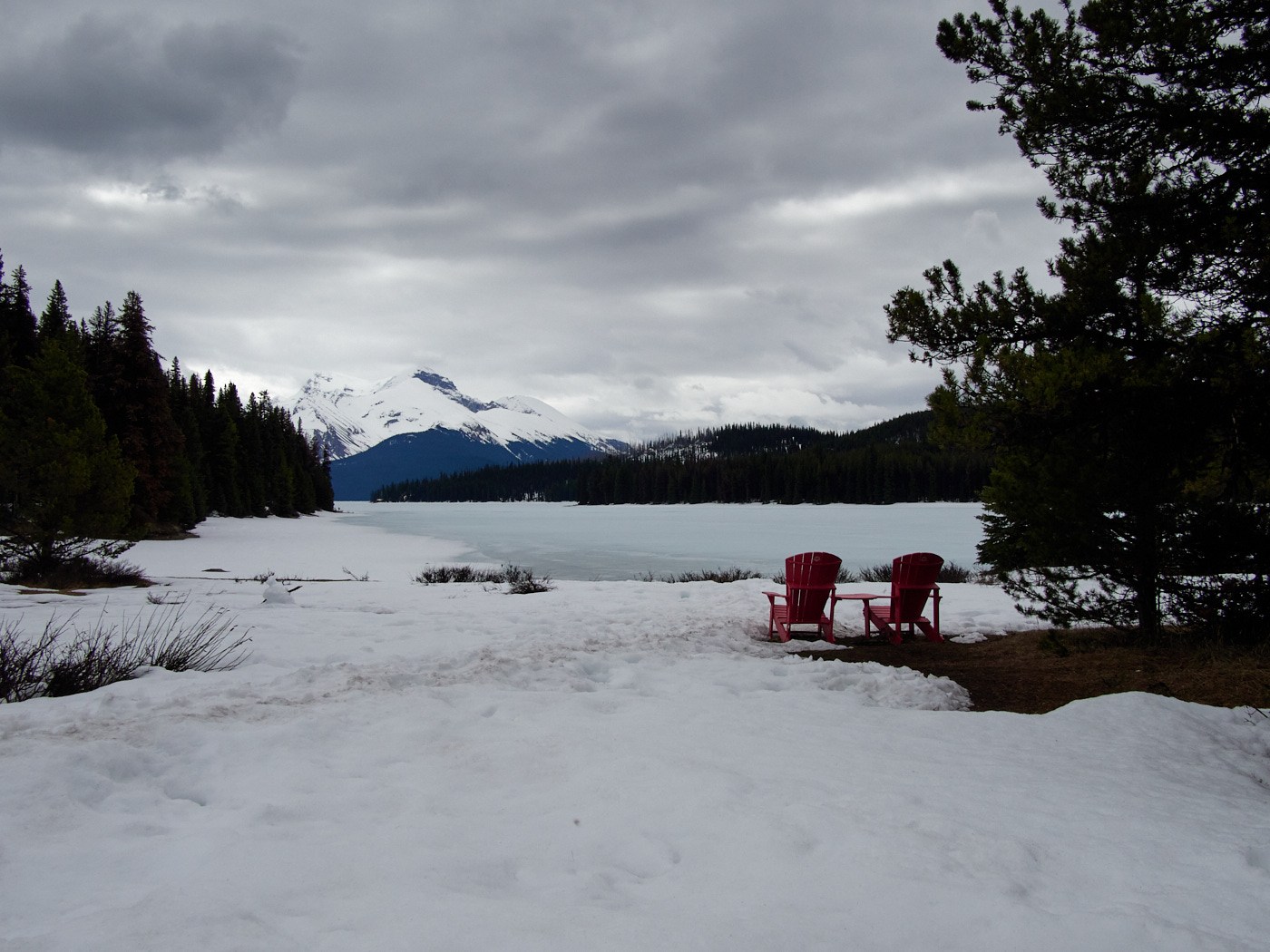
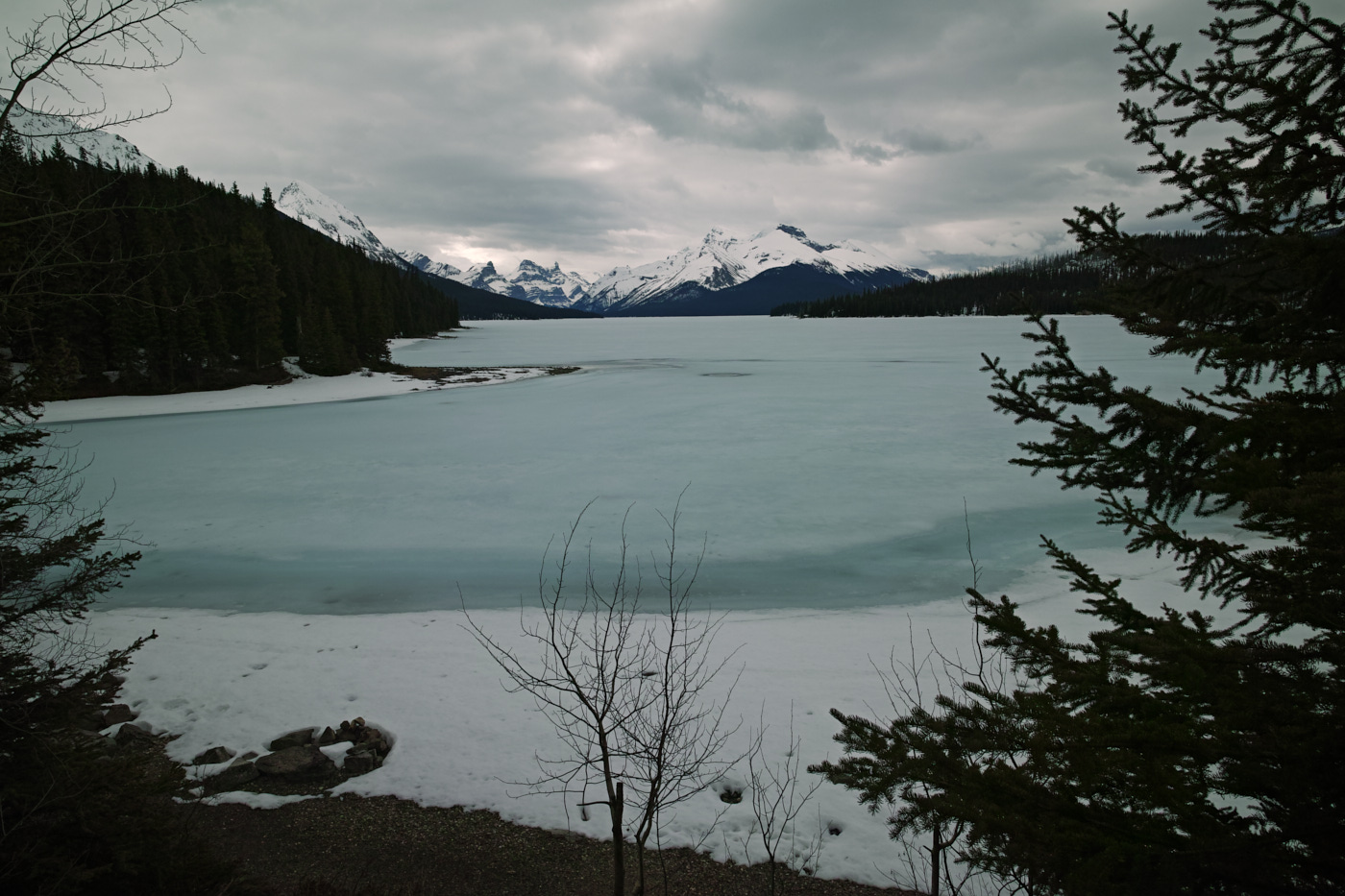
As the trail turned towards Opal Hill, things were a different story. The trail was covered in snow, the length of my bottom trekking pole section when set to 125cm.
If you walked between the most trafficked footprints in the frozen grey section, you could avoid post-holing.
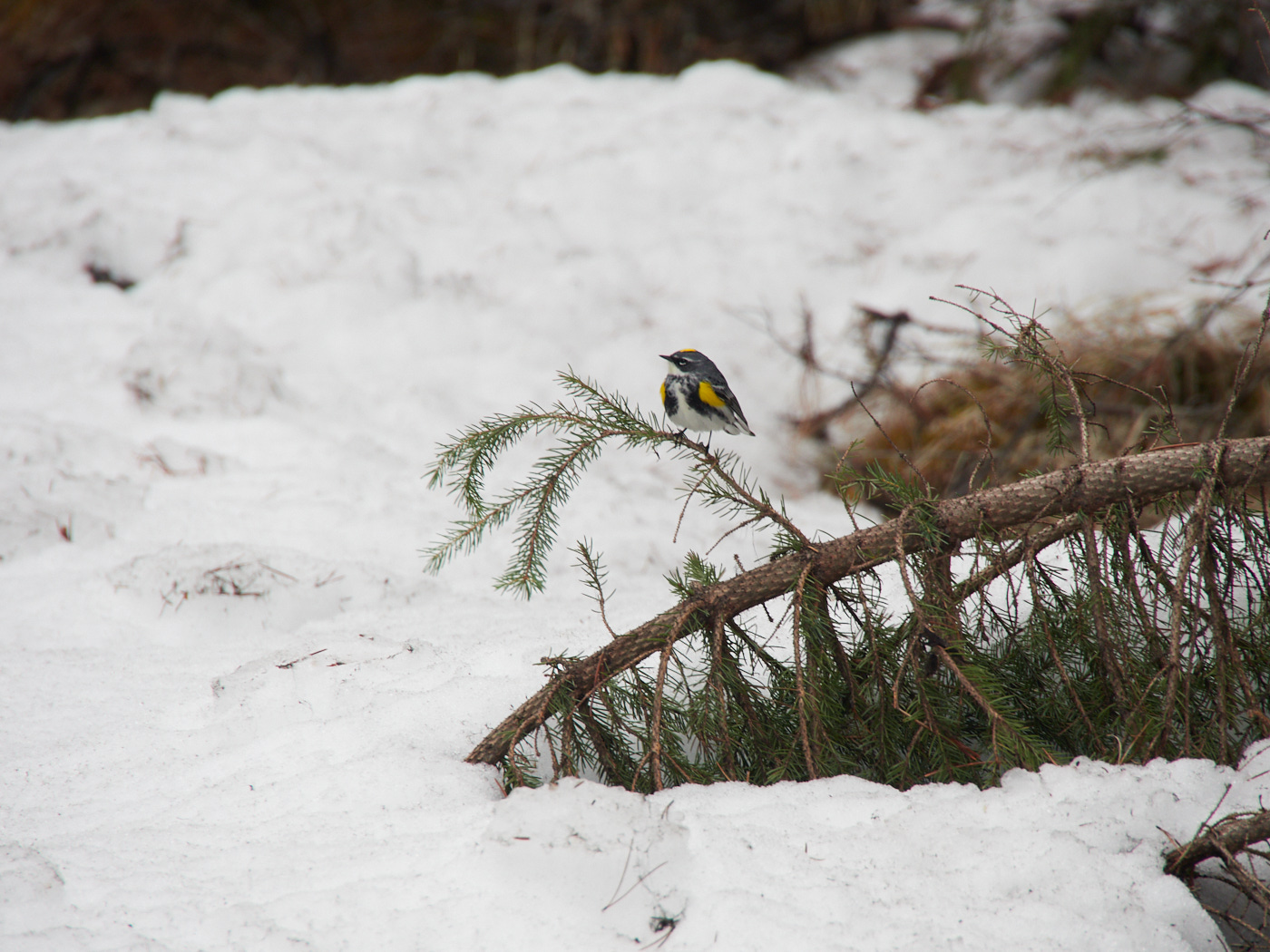
I trudged onwards for the heck of it. I wanted to see how bad I’d do, or how much I’d enjoy a very moderate hike in the snow with my poles, microspikes, and trail-runners.
The answer is that this section was pretty skippable, and that I decided I didn’t want to try walking around in the snow again any time soon. Good to test this out in a low stakes environment.
Honestly, this hike isn’t much of one. It’s more of a nice lake path, and then a forested loop back to the parking lot. I’d probably have preferred just walking closer to the lake for a longer time.
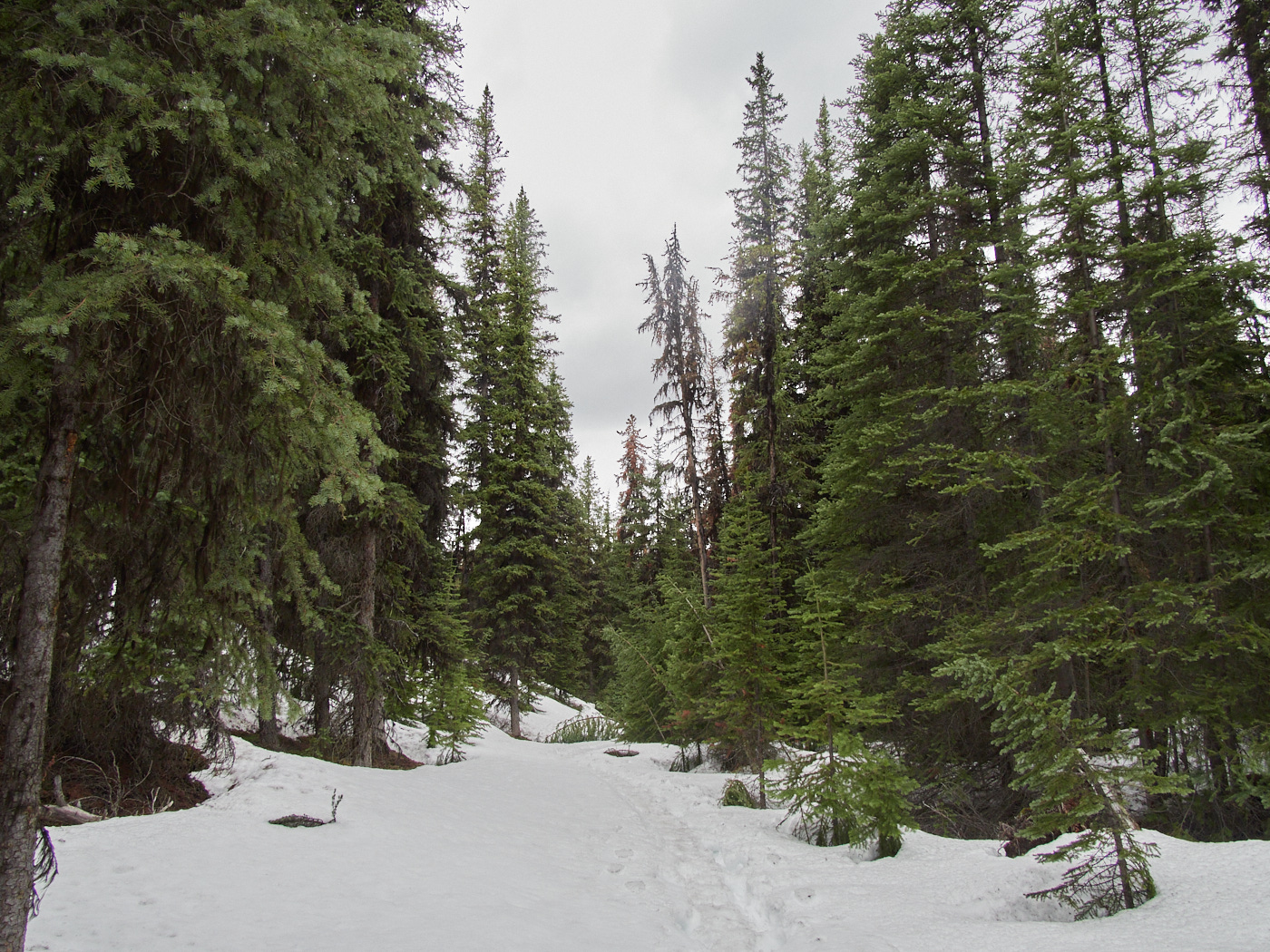
Driving back, I stopped at one of the pull offs near Medicine Lake for a big, thick turkey pastrami sandwich.
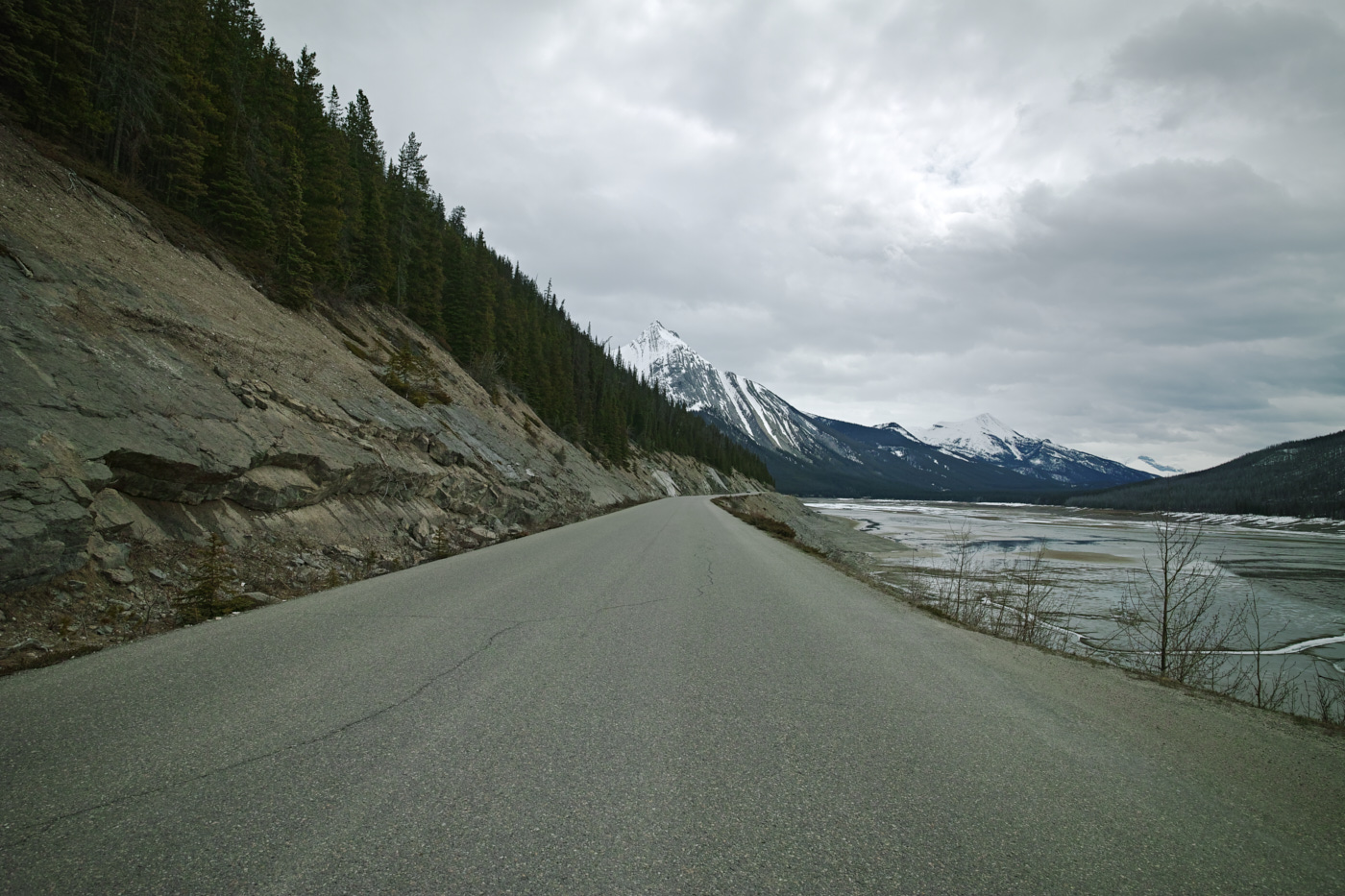
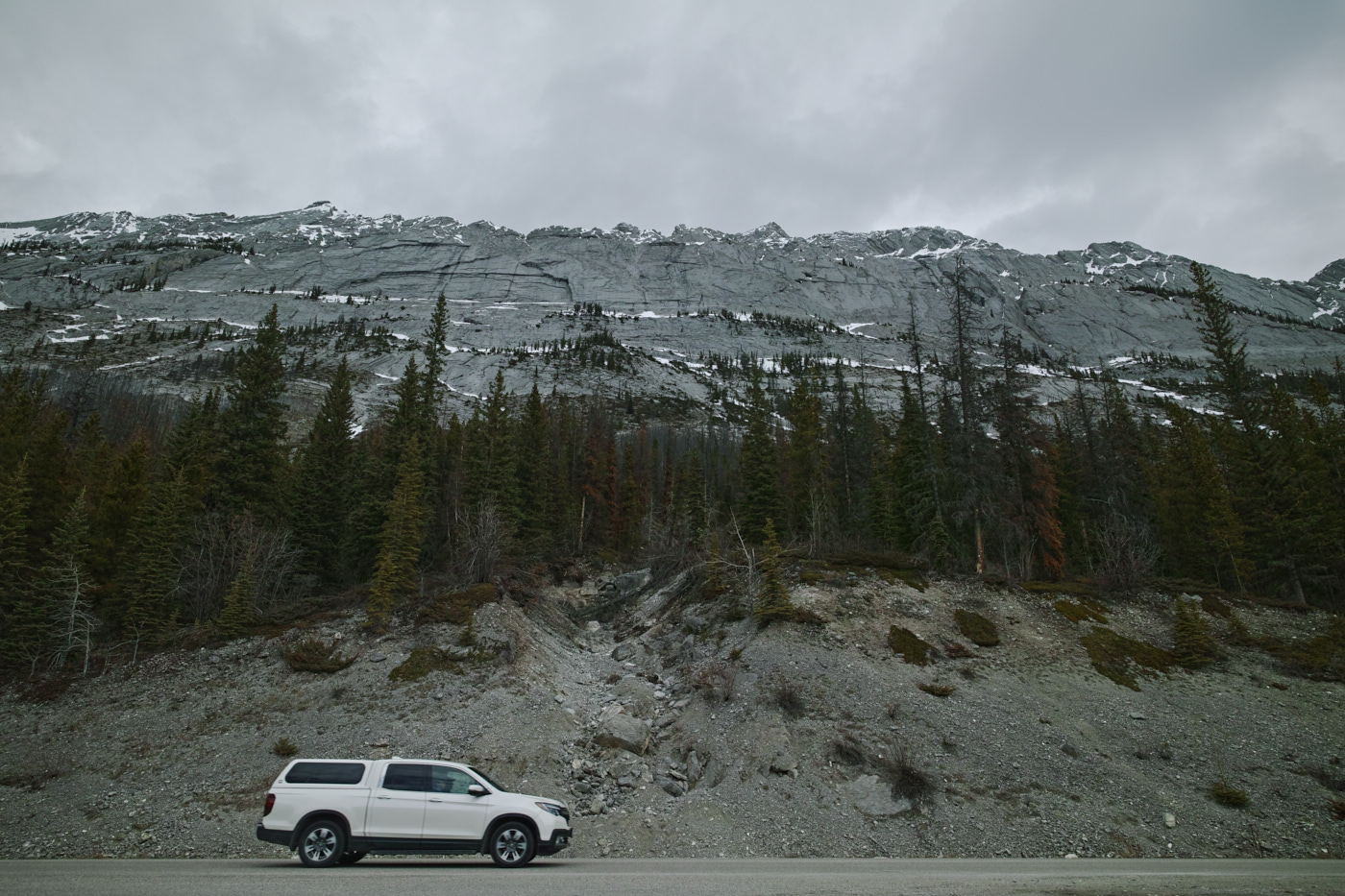
I stopped again shortly thereafter and saw a nesting bald eagle, accompanied by a bajillion photographers (many with telescopes and tripods, all a respectful, long distance away.)
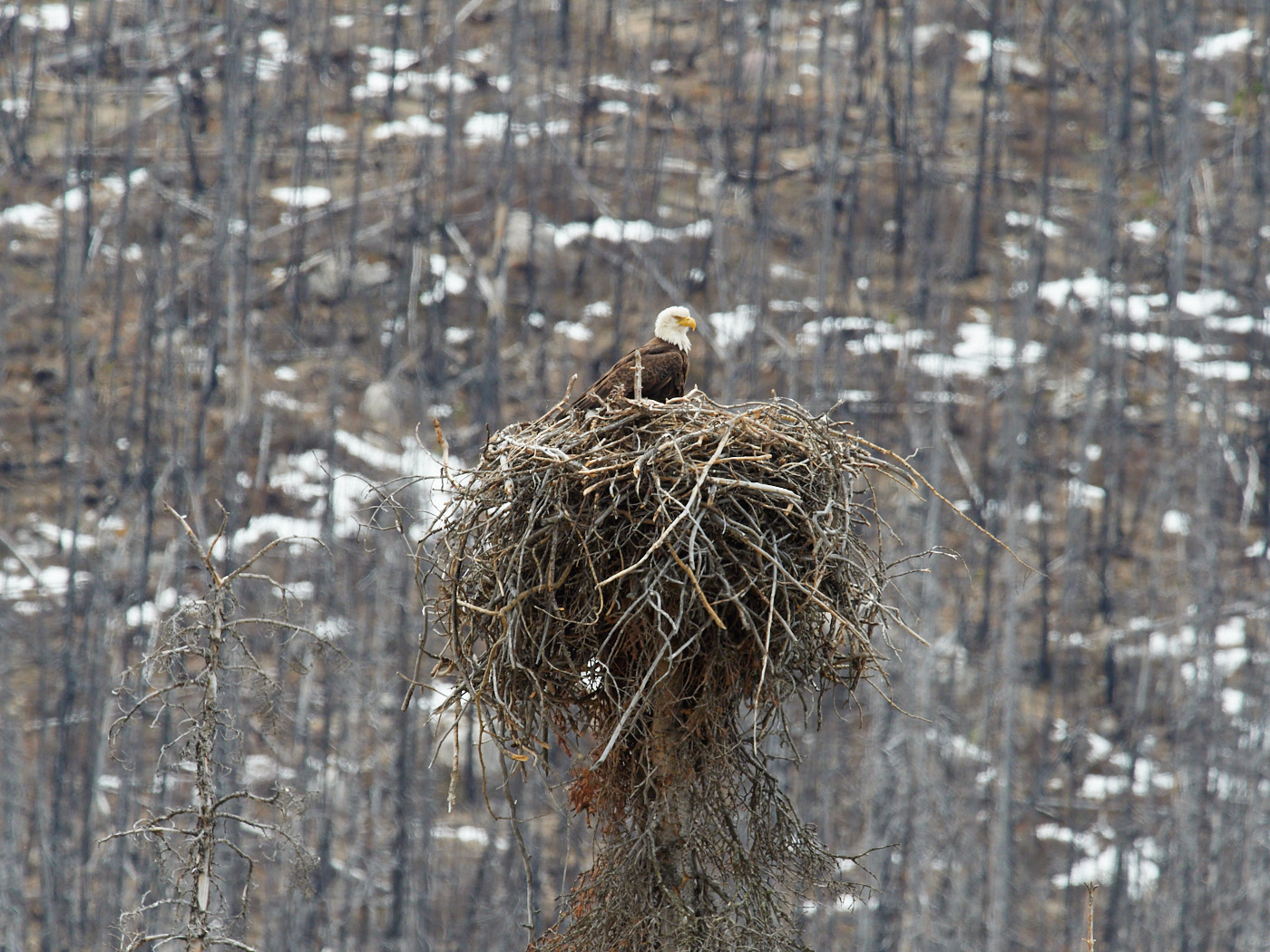
My next stop along the Maligne Lake Road was the Maligne Canyon overlook, which had a glorious vista.
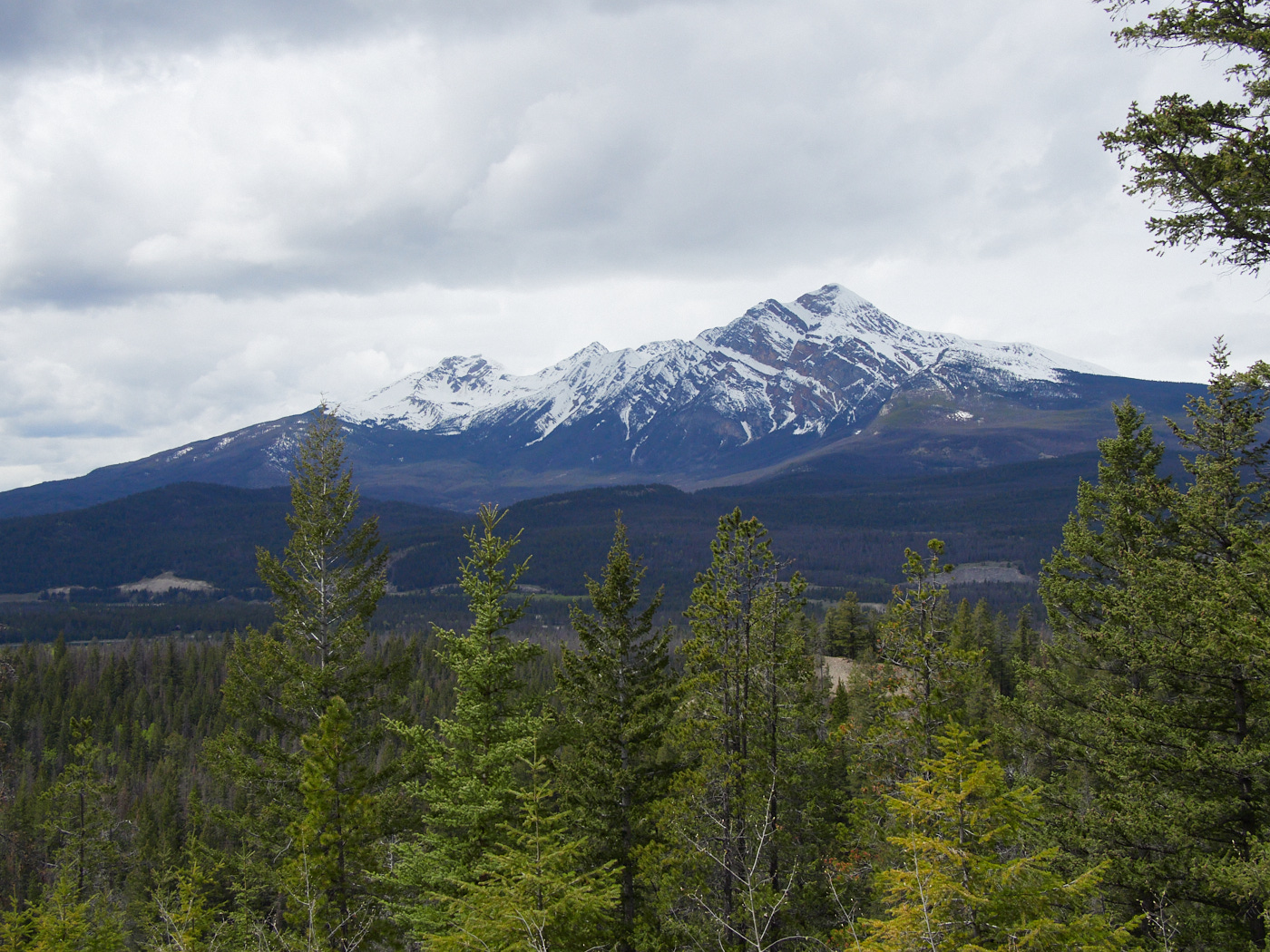
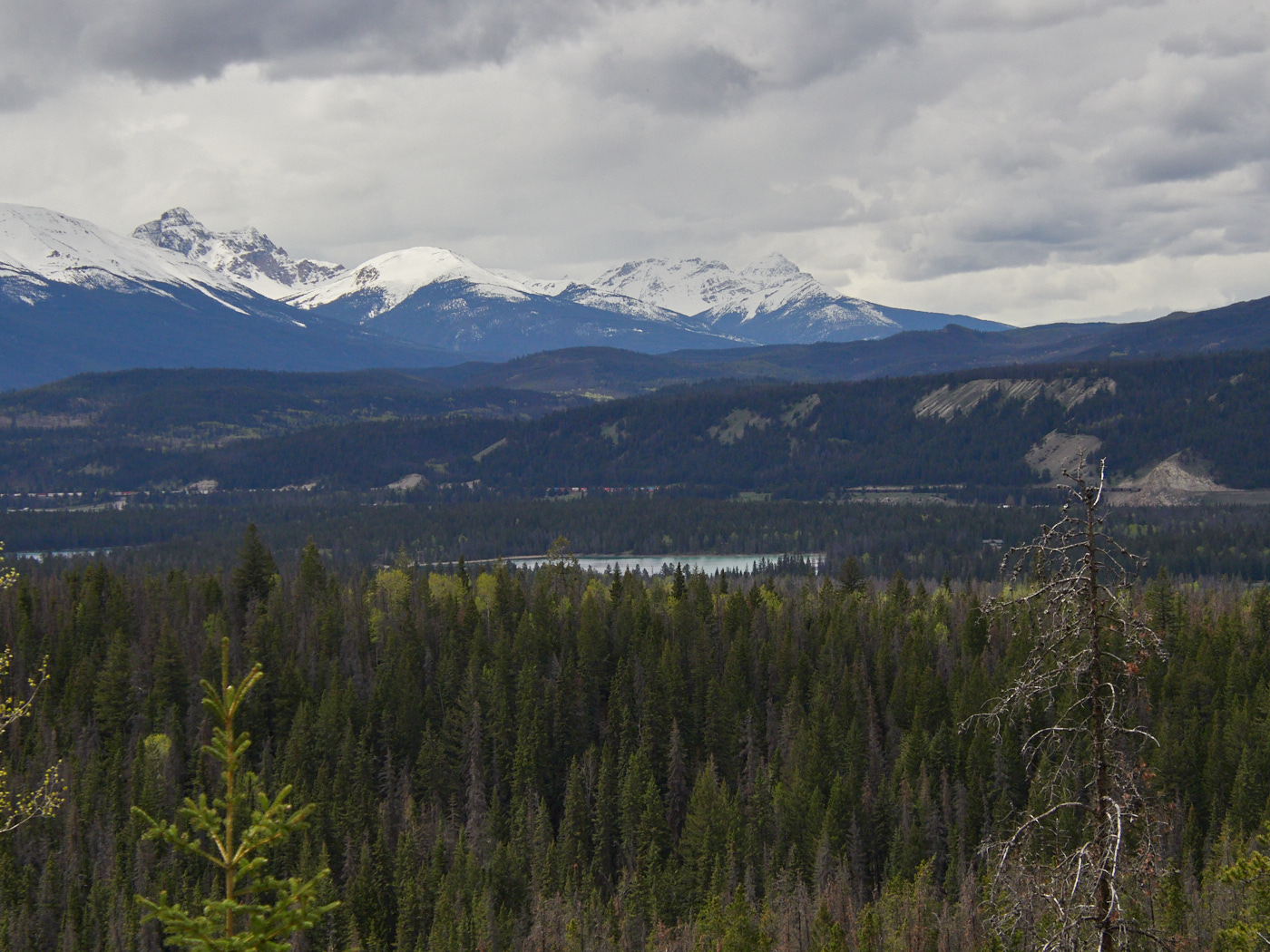
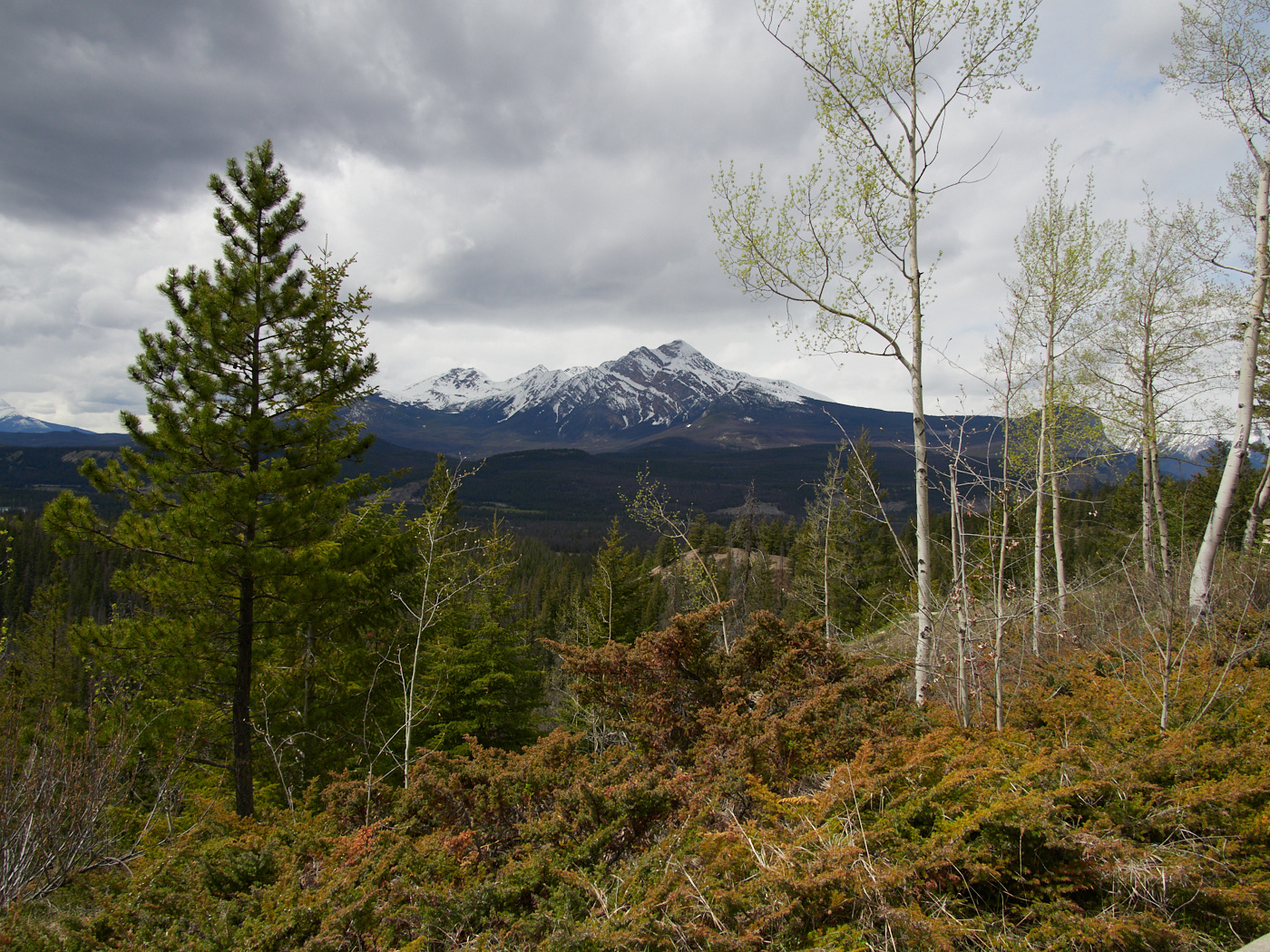

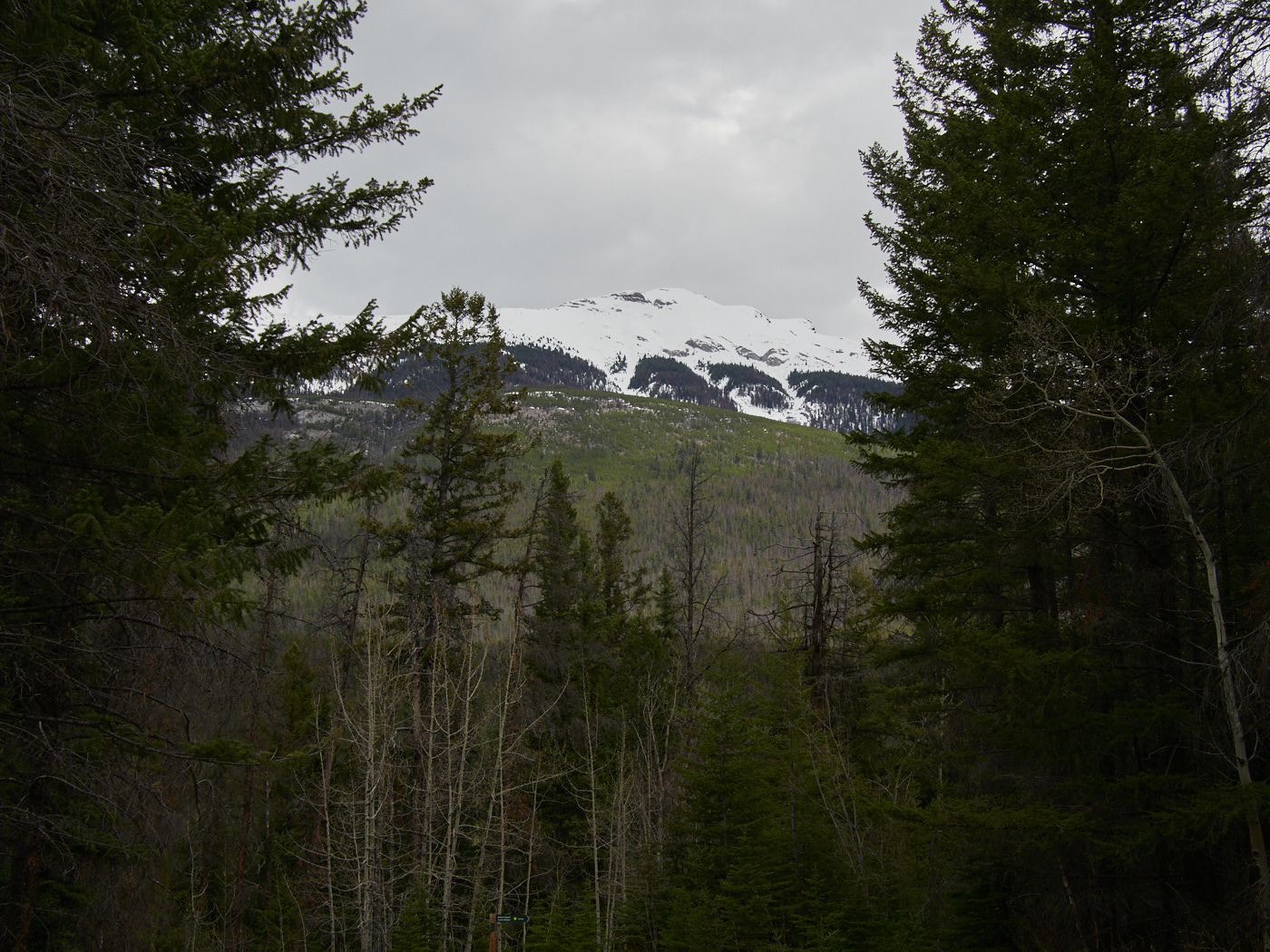
And I was then back on the main roads.
The Valley of the Five Lakes
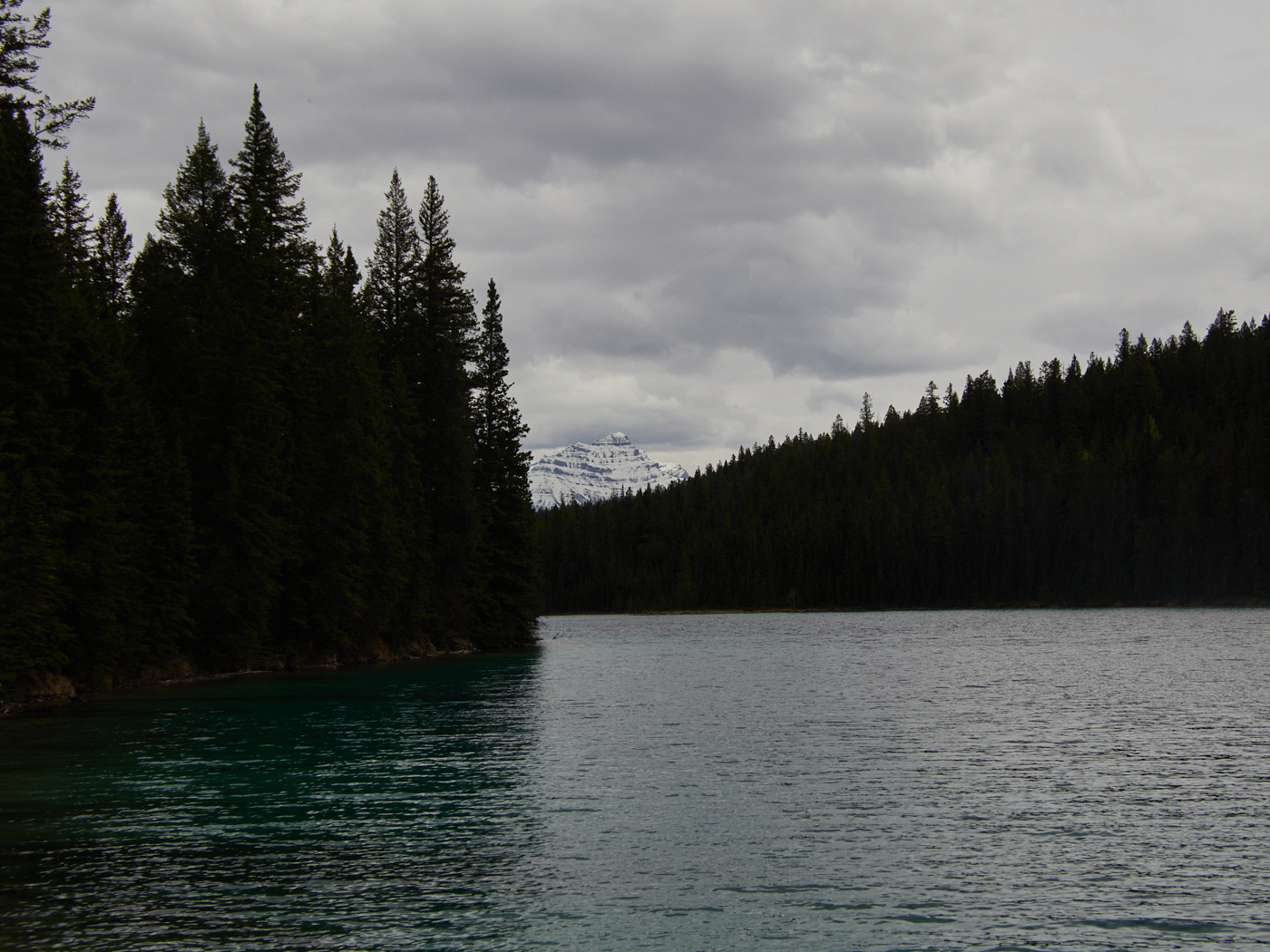
The Valley of the Five Lakes trail is one of the most popular and accessible in Jasper National Park.
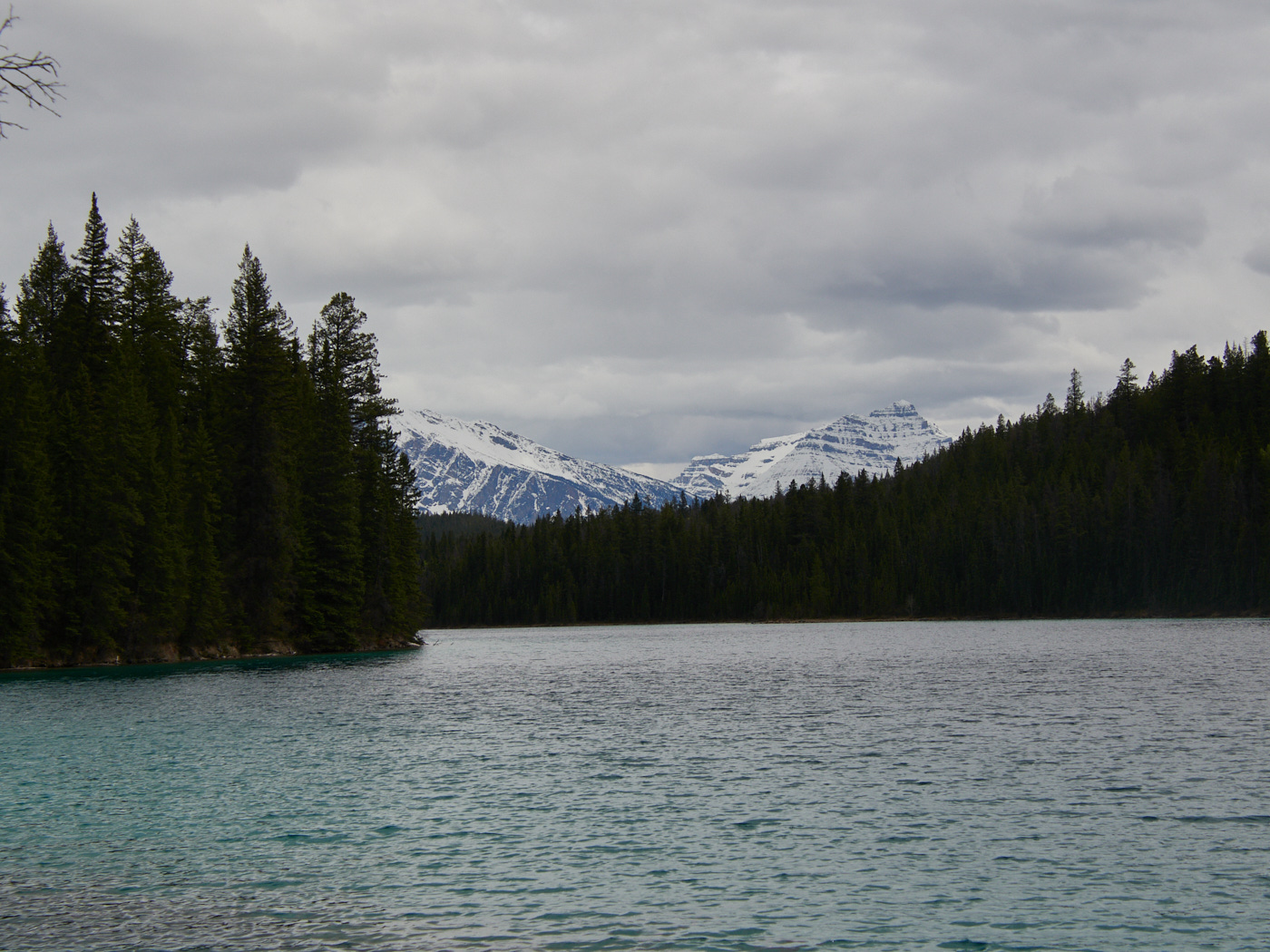
It actually consists of a few loops that are part of a wider trail system, circling the titular five lakes, which are unimaginatively named “First Lake” through “Fifth Lake” 🙄. It’s an extremely heavily trafficked area.
There’s lots of erosion, wide sections, switchbacks, and off trail spurs that look well used.
| Trail Information | ||
|---|---|---|
| Name | Valley of the Five Lakes | |
| Type | loop / trail system | |
| Location | Jasper National Park | |
| State | AB | |
| Country | Canada | |
| Miles | 2.9 | |
| Check out the trails index for information on more trails! | ||
Just hike up and over into the valley and you will pass many of the tourists, some of whom may not actually be prepared enough for the hill climb.
Others make it to the last of the lakes where they proceed to violate their serenity by chucking rocks in them. 🙄🙄🙄 (I’m not bitter, I swear.)
Some solitude can be found if you take your time on some of the longer outside loops, or spend some moments pausing at the lakes furthest along the trail.
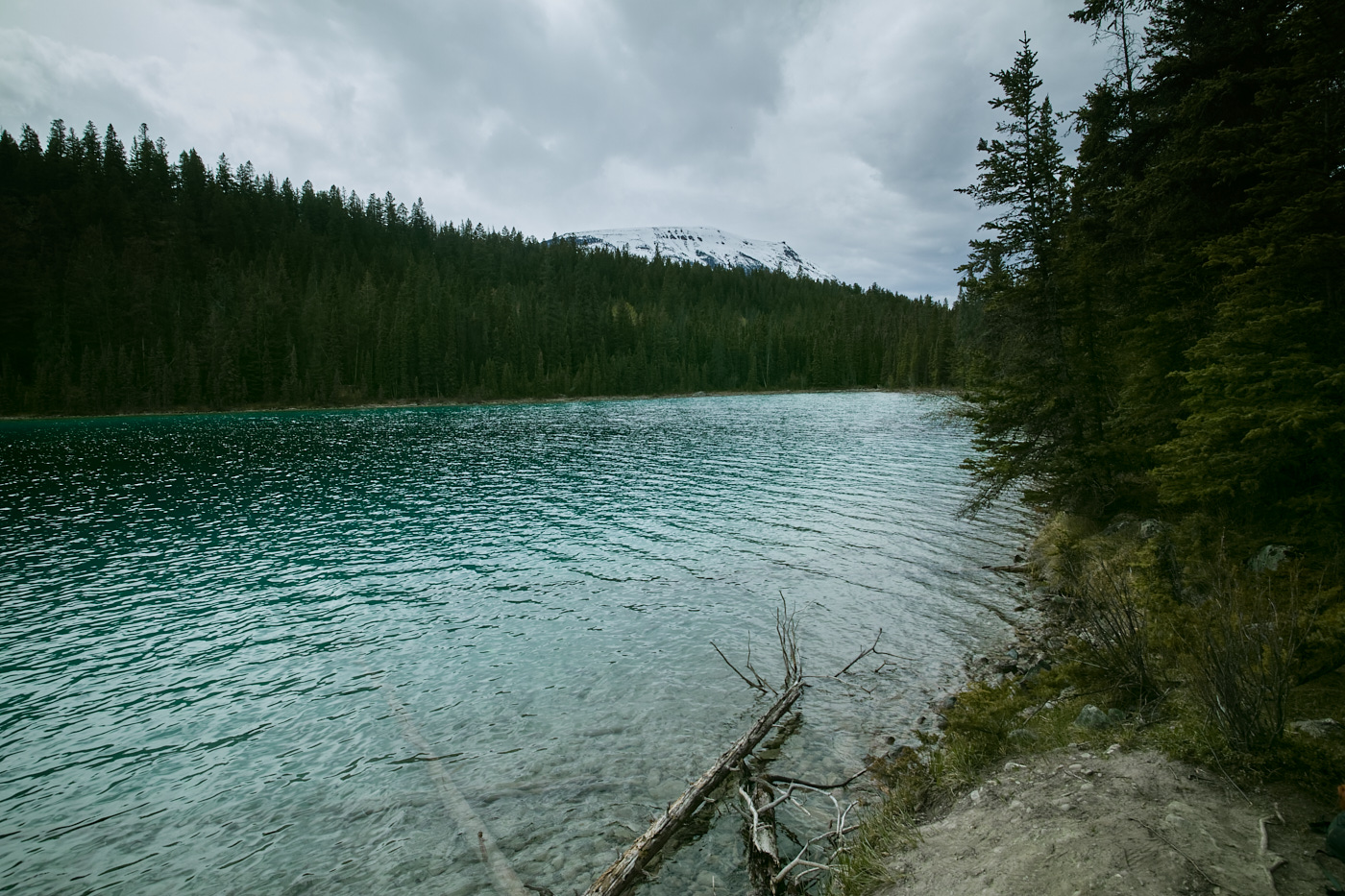
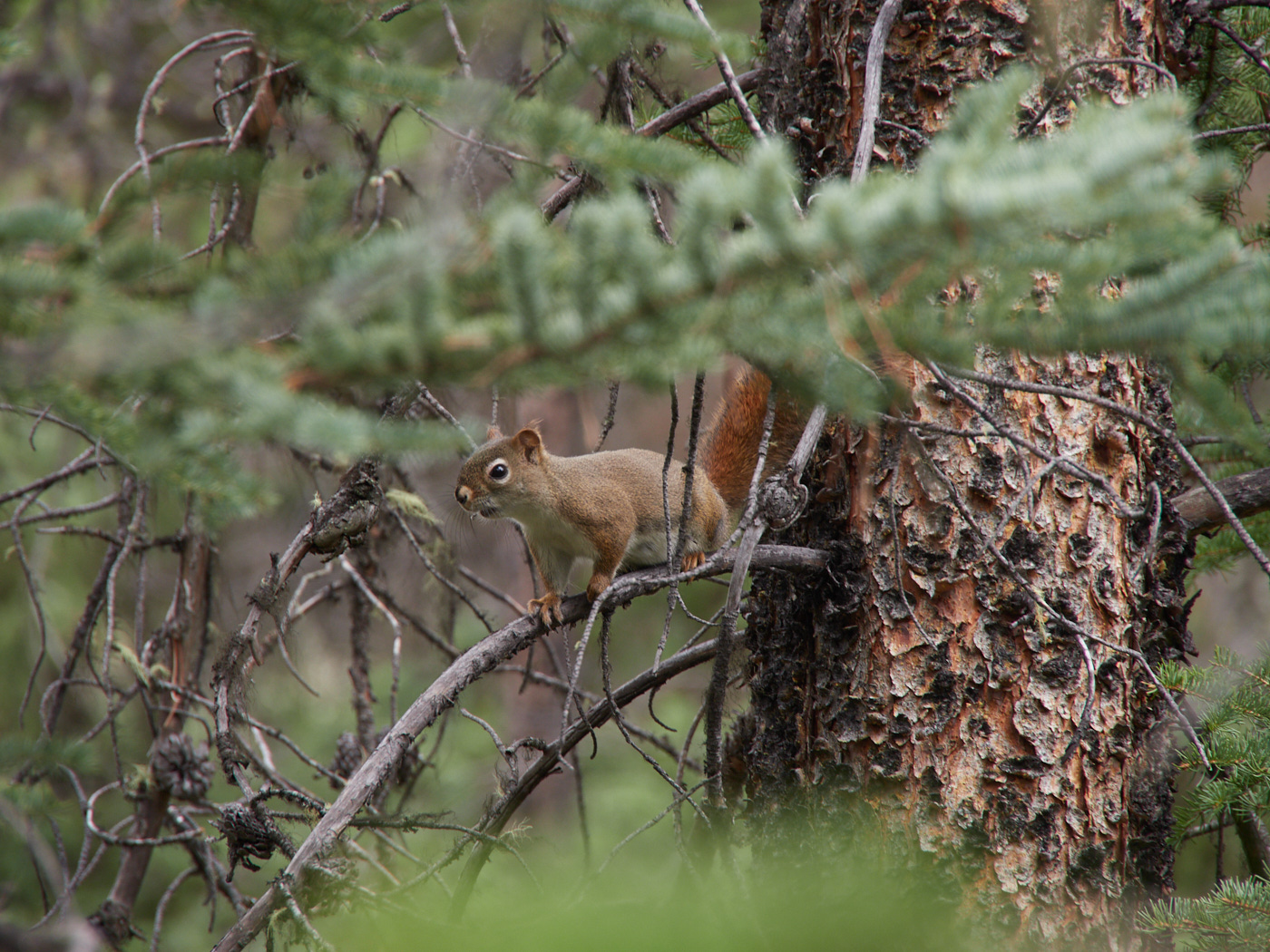
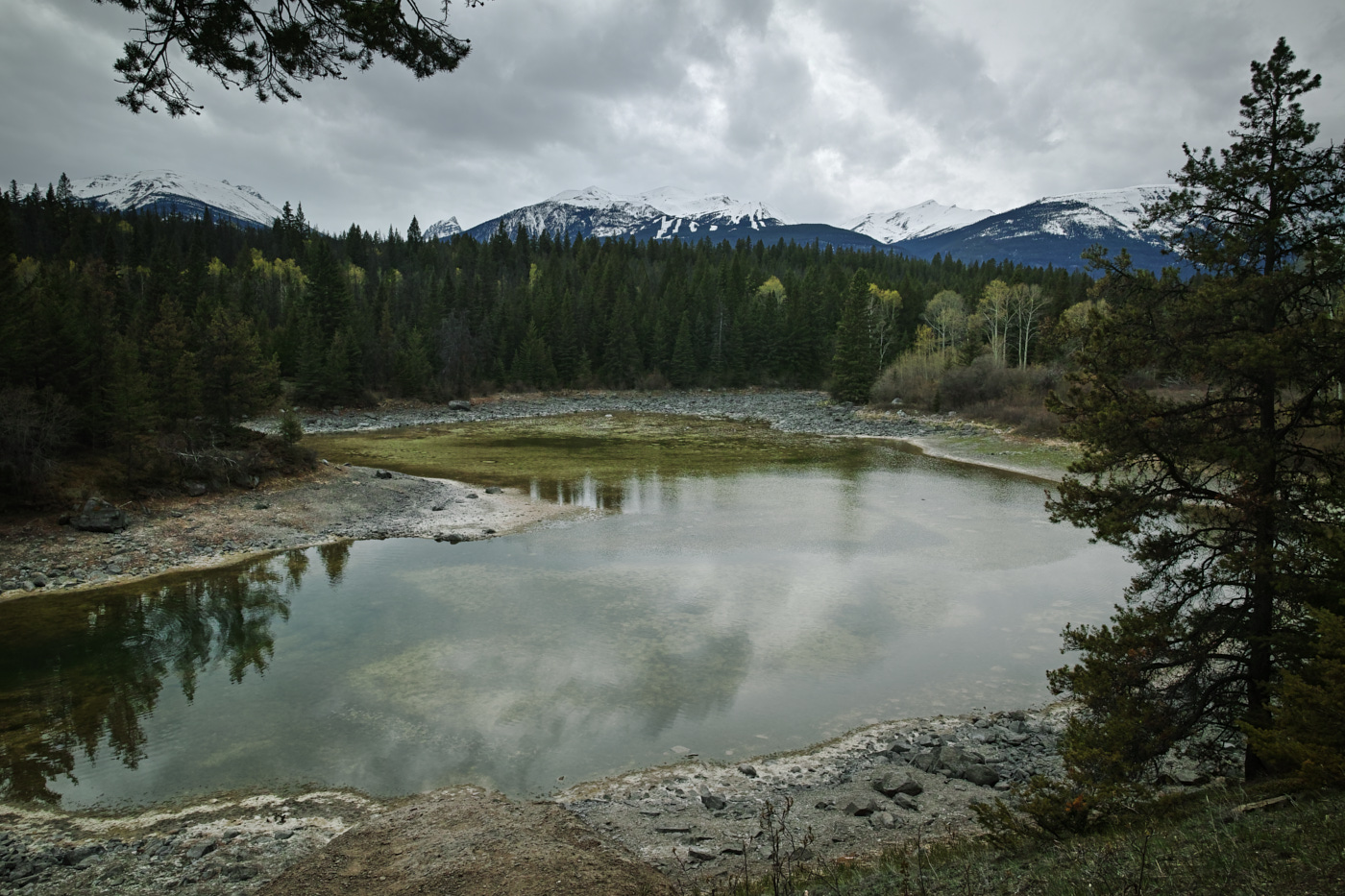
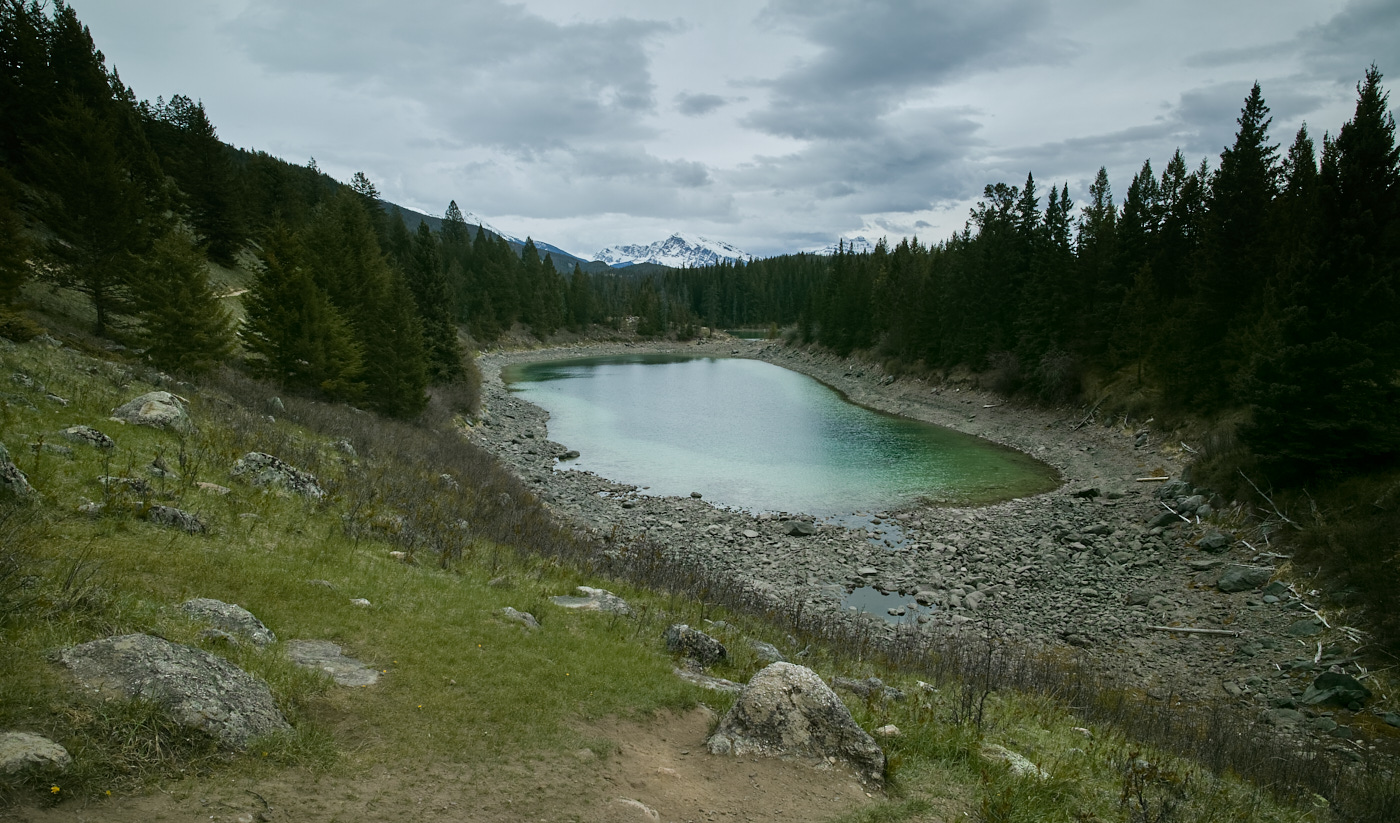
The lakes themselves – particularly lakes two through five reminded me so much of the lakes I visited only a few months earlier in the Ancient Lakes area of Washington.
Probably, they were formed via similar geologic processes.
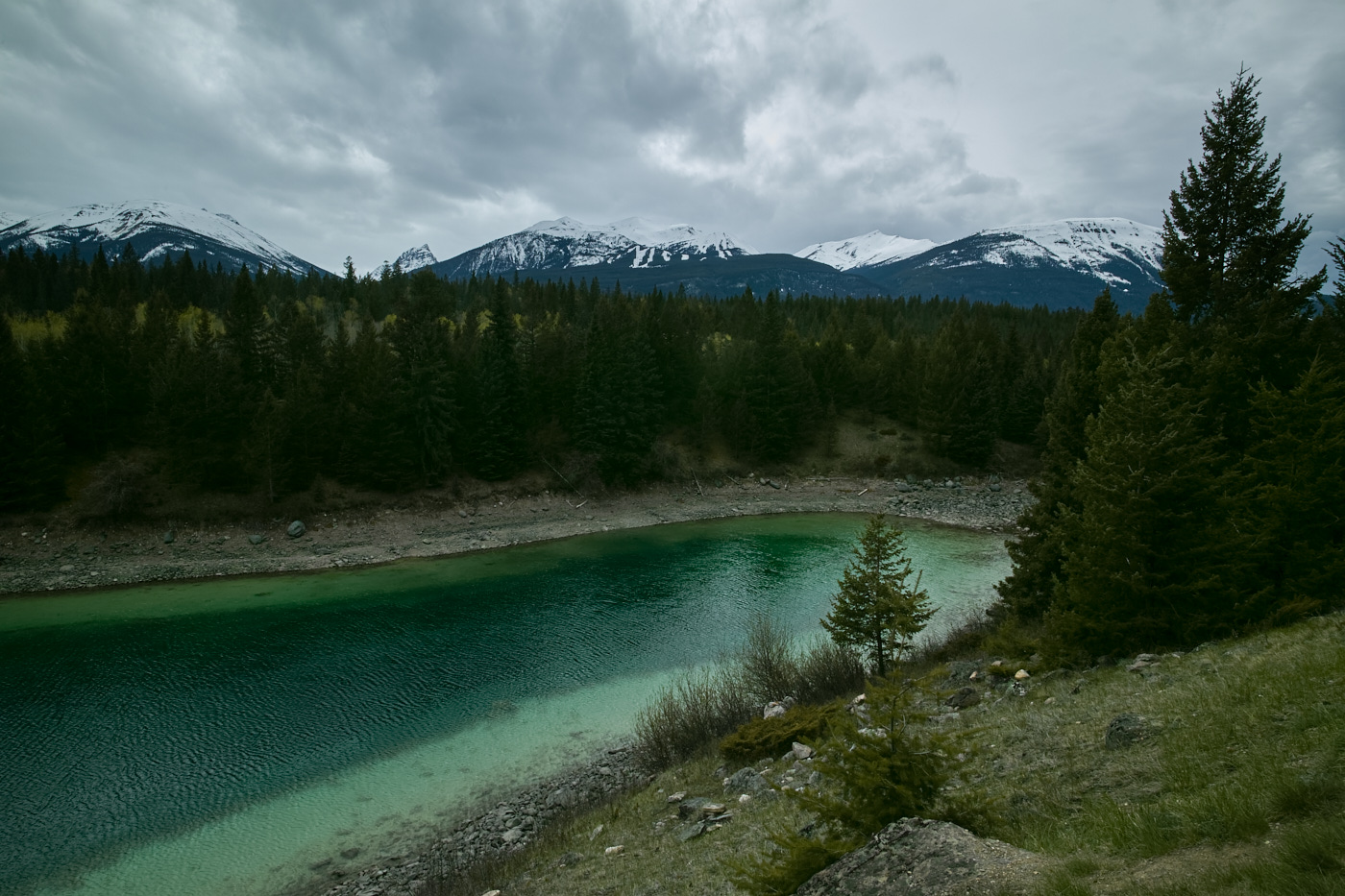
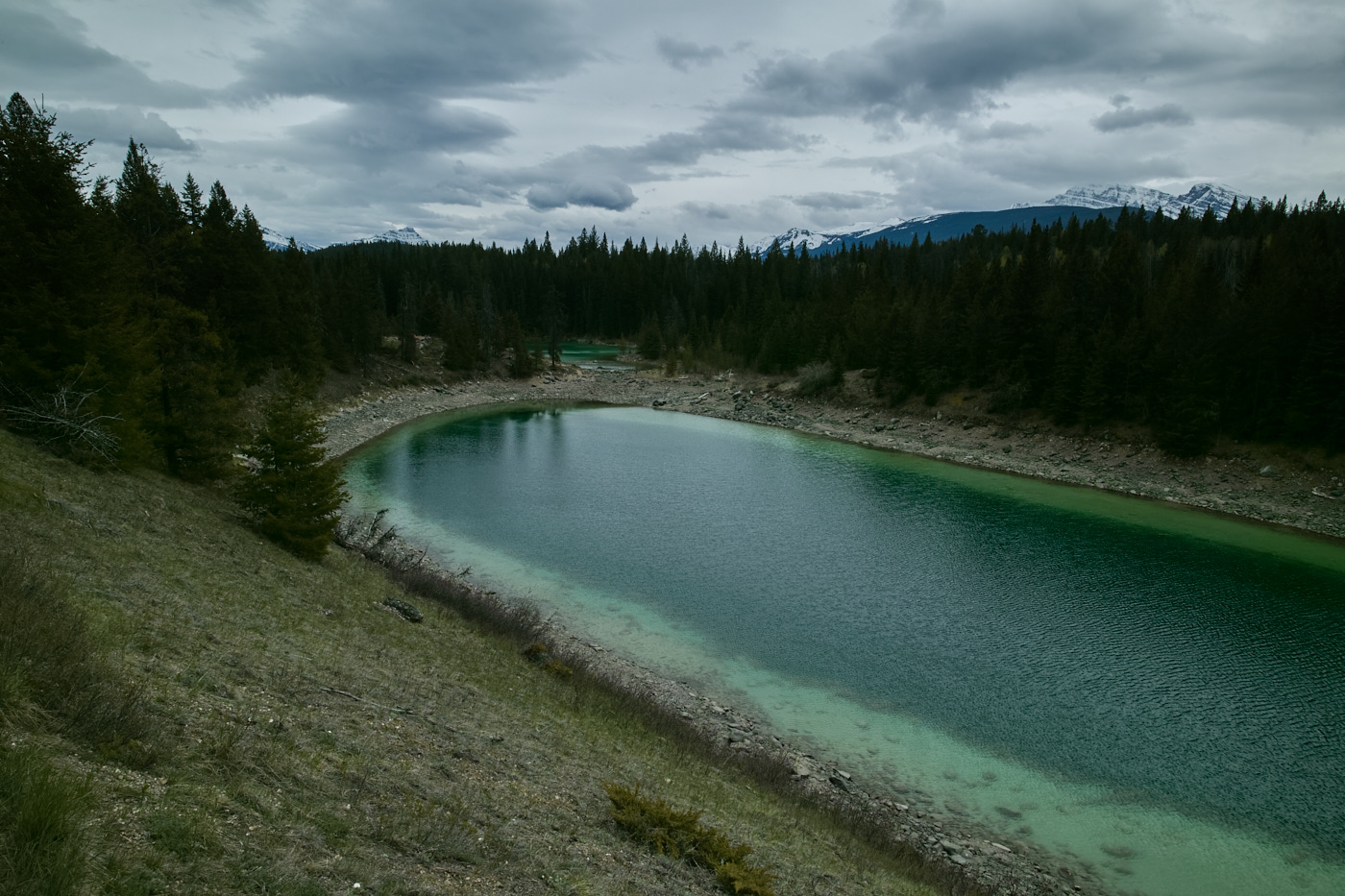
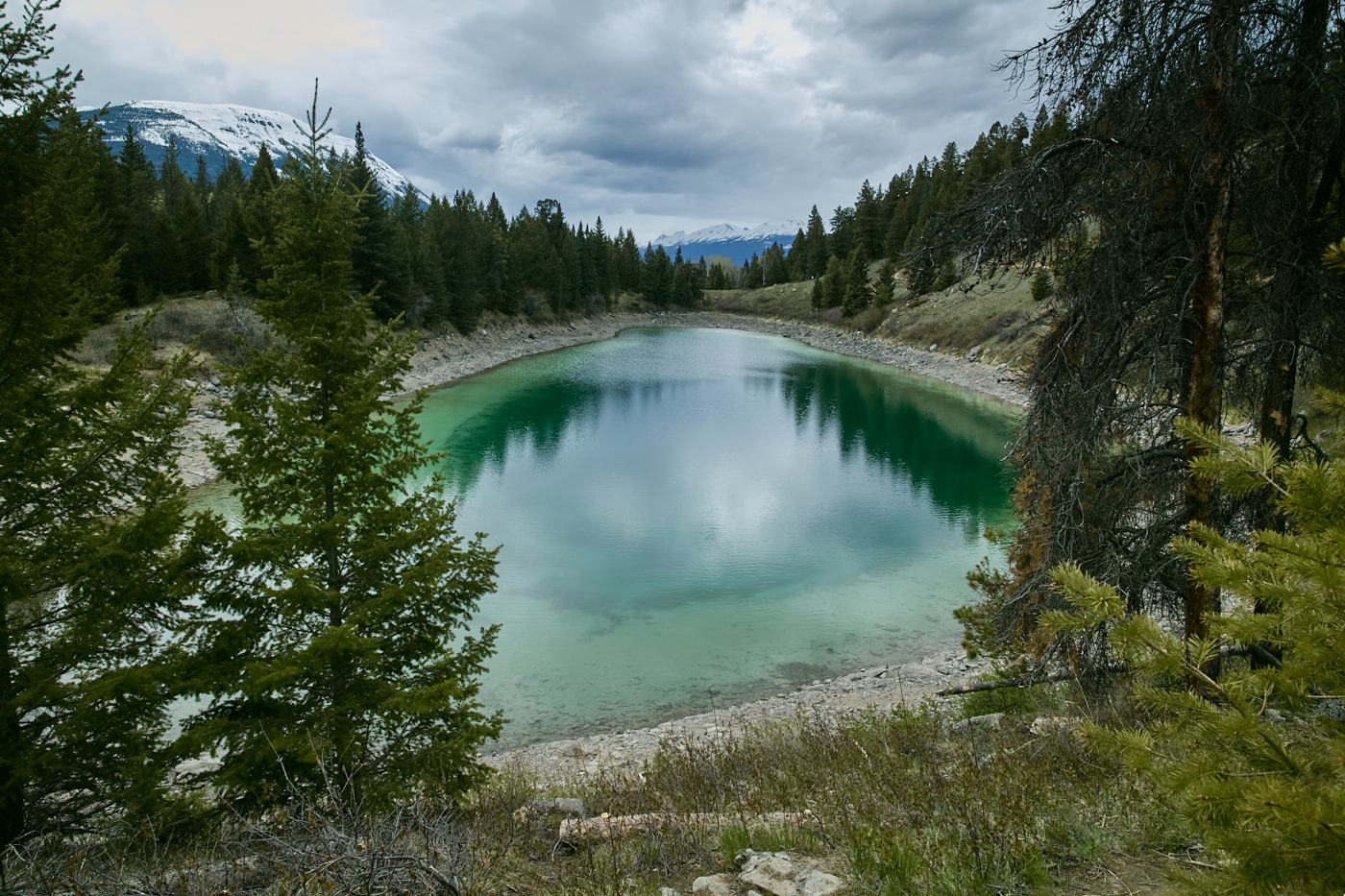
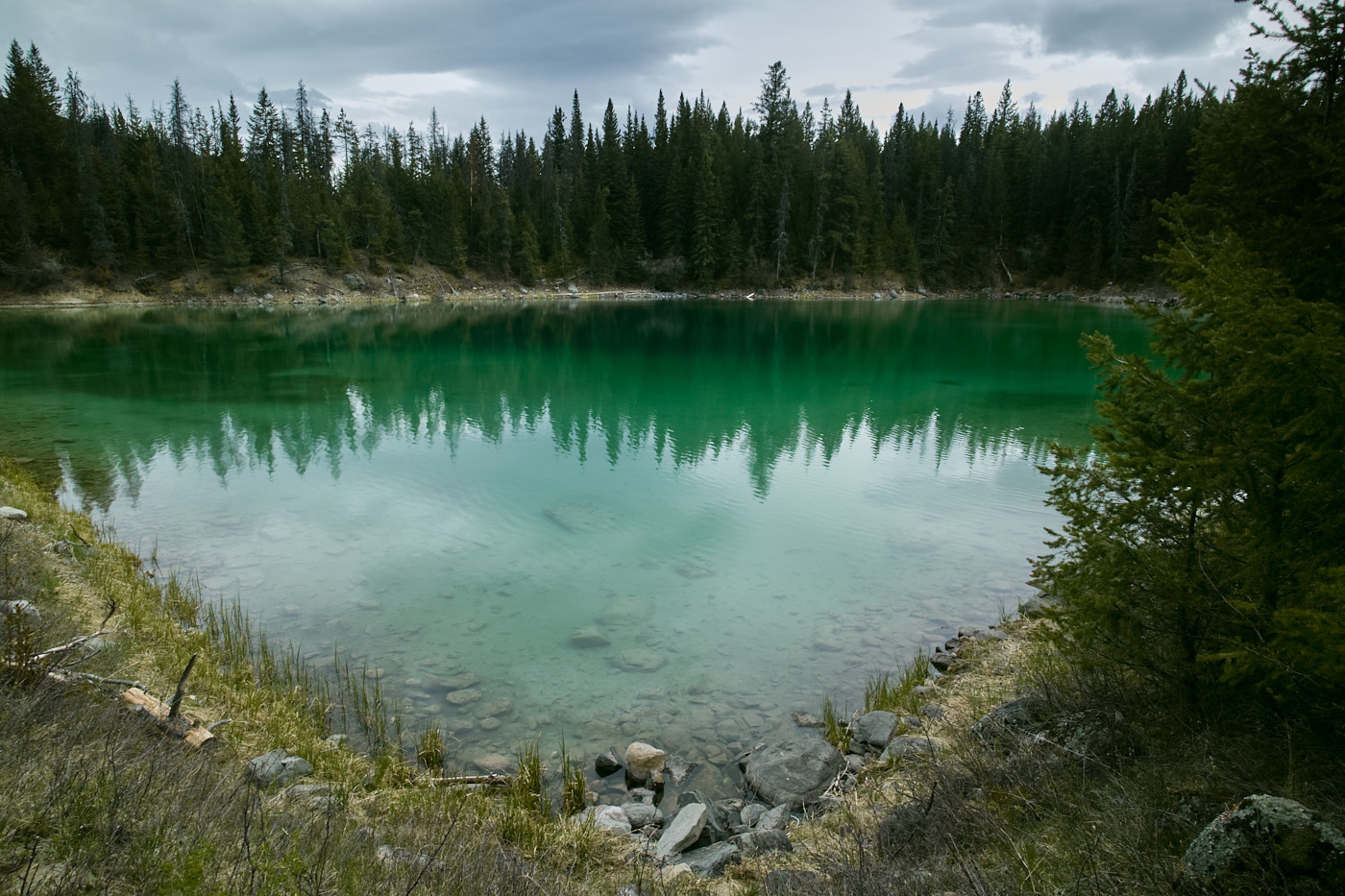
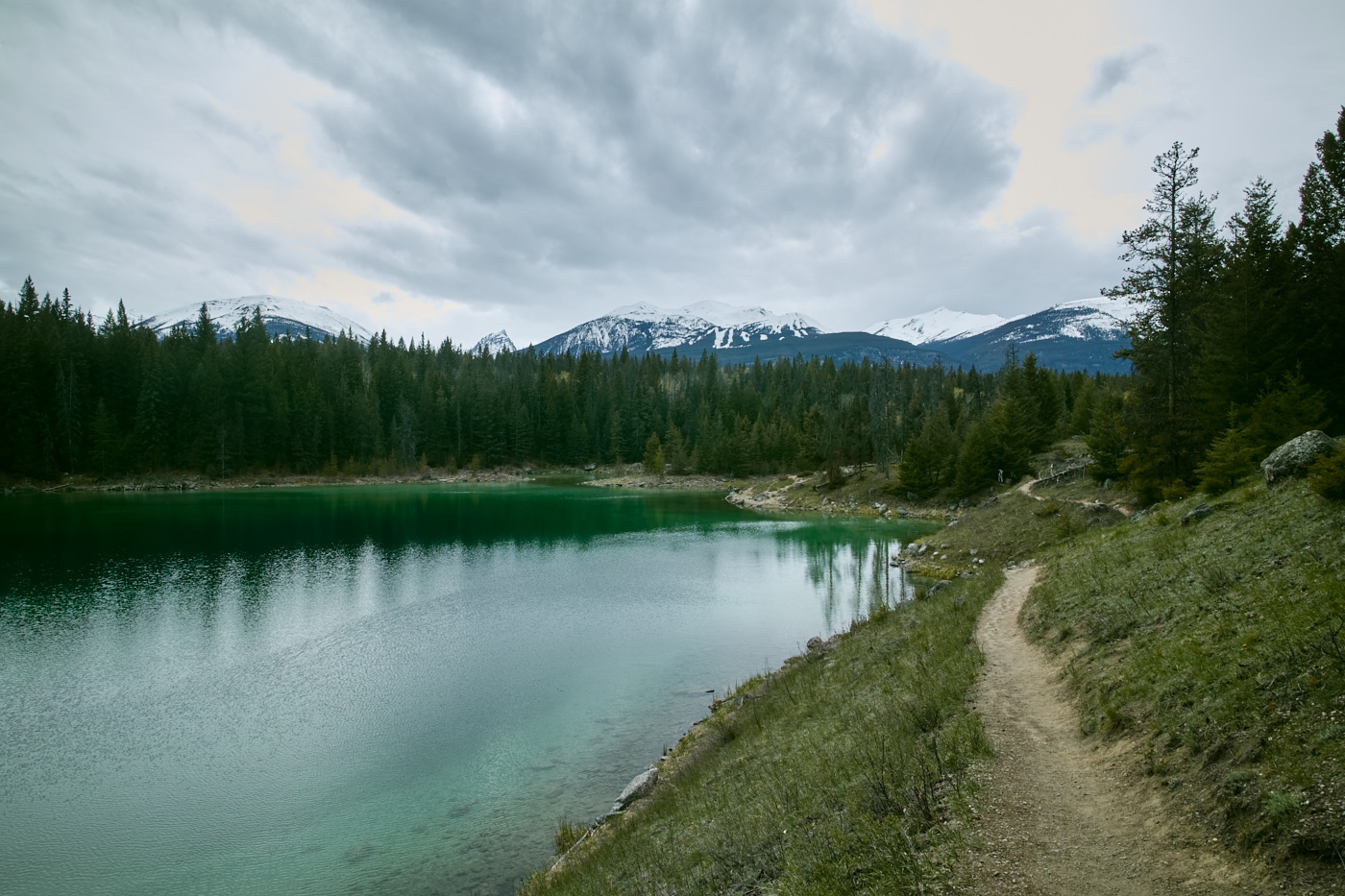
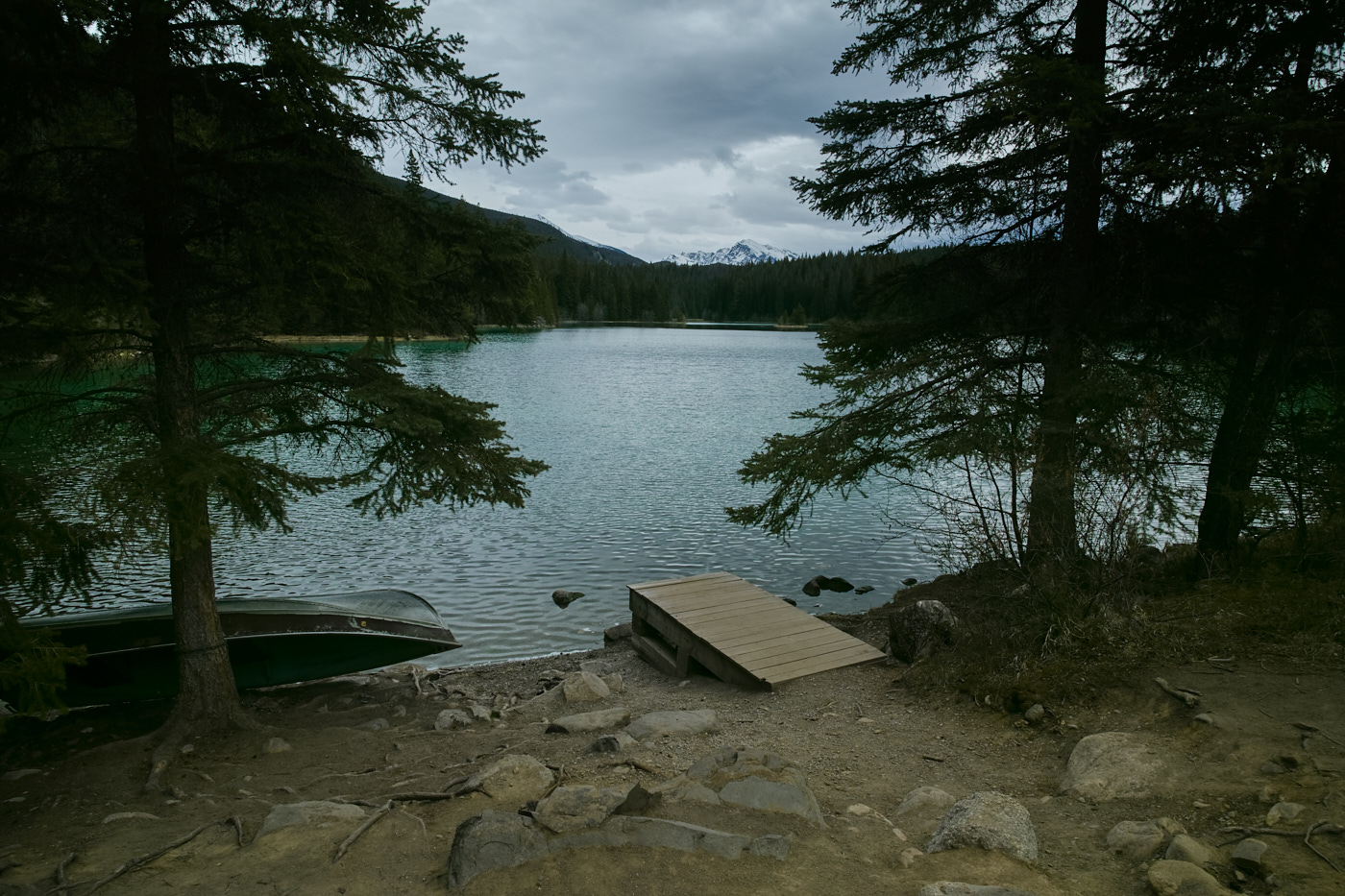
Sleeping in B.C.
After these two hikes, I made my way back through the town of Jasper, and picked up a few postcards.
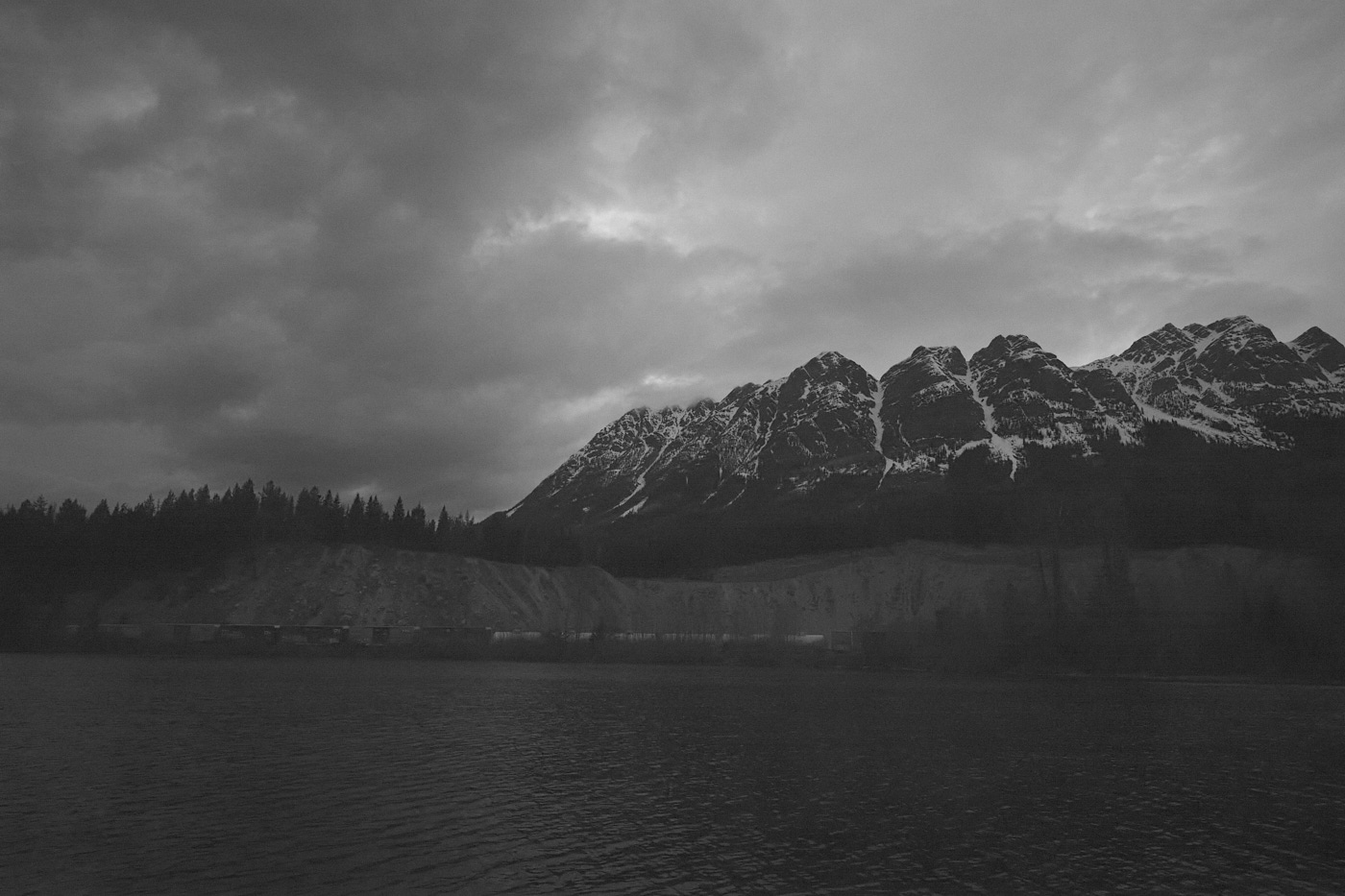
Back at my breezy campsite, I grilled a couple of pork chops and roasted some garlic and red pepper.
I admired the sunset, then curled into my sleeping bag for the night.
This post was part of a series:
Thanks for reading!
If you enjoyed this post, you might enjoy these 5 similar posts:
- 2022-09-12 —A Great Day at Wells Gray!
- 2022-09-17 —The Road to Robson
- 2020-10-24 —Old Logger's Path
- 2022-09-05 —Towards the Beautiful Islands
- 2022-09-13 —The Helmcken Falls Rim Trail (A Great Day's Conclusion)